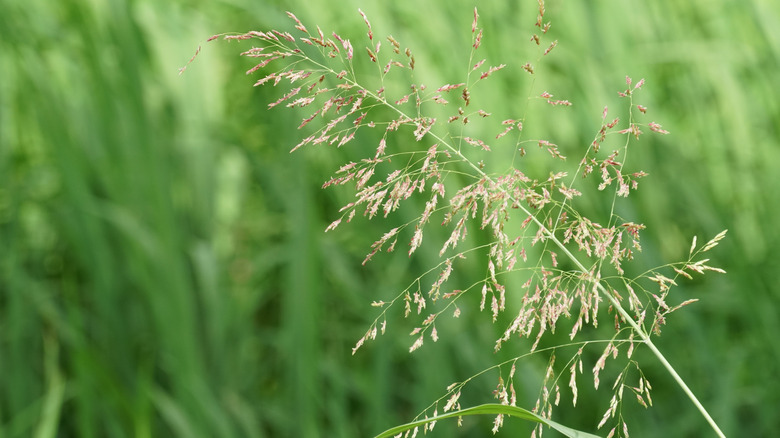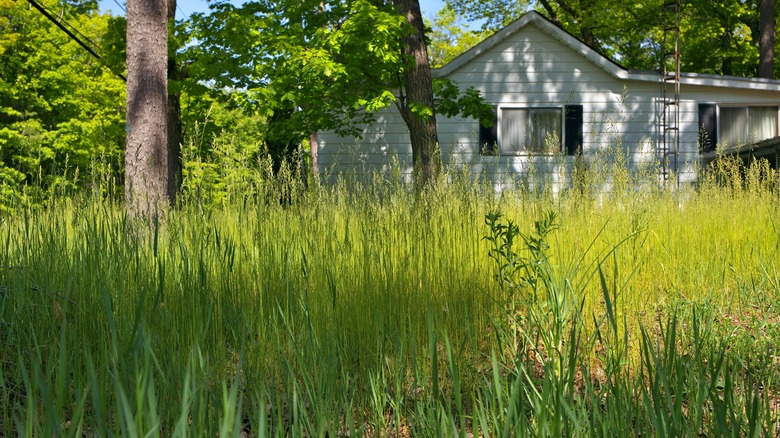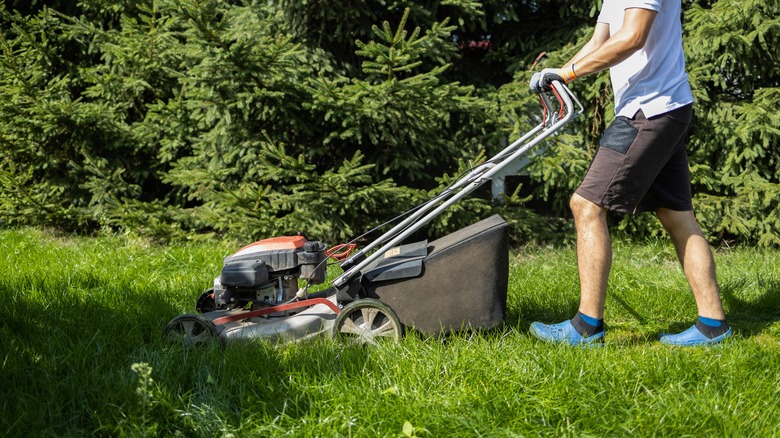Essential Tips For Controlling Invasive Johnsongrass Weeds In Your Yard
We may receive a commission on purchases made from links.
With winter departing and warmer temperatures arriving, many homeowners have already begun the battle of the weeds. While your grass might still be coming out of its dormant state, weeds have a head start in the race to survive — and it's for a good reason: with so many forces working against them, weeds have evolved a special resilience to harsh conditions. This is why weeds can thrive in places where you cannot get grass to grow. Such is the case with Johnsongrass, an invasive weed species that quickly will take an entire yard hostage.
While you may try all the normal tactics to get rid of weeds, you'll need a different battle plan for this weed if you have any hope of reclaiming your property. Like many weeds, Johnsongrass is a master at propagating and resisting your best attempts to limit its growth. It does this by aggressively seeding and sending out thick and fast-growing rhizomes, otherwise known as roots. What's the key to beating back this monster? Poisoning the entire plant, down to the roots. Weed poison, like Roundup Ready-To-Use Weed and Grass Killer III ($15 at Home Depot), is especially effective at penetrating the soil and infiltrating a weed's root system, which will kill the plant before it can spread farther. Remember to apply weed killers with care — they will indiscriminately wipe out whatever plant they come into contact with — and wear appropriate protective gear to avoid skin contact.
Know thy enemy
If you hope to beat Johnsongrass for good, a brief history is called for. Sorghum halepense, dubbed "Johnsongrass" in the United States, is also known by the names Aleppo grass or Aleppo milletgrass, as it emerged in Mediterranean regions of the world, such as southern Europe (though it also has roots in India), hundreds of years ago. When brought to North America in the early 1800s it was introduced to the U.S. as a forage crop, but it quickly grew out of control. Today it is nearly universally despised as this invasive plant spreads quickly and its hardy characteristics make it difficult to decimate.
Johnsongrass grows up to 8 feet tall and has developed the ability to be both cold-resistant and fairly drought-tolerant. It easily grows in nutrient-lacking soil and is highly resistant to many diseases that afflict other plants, making it a sinister nemesis of farmers' crops; the weed has even been able to develop resistance to many herbicides (currently 21 types, and counting). Incredibly bothersome for homeowners and hobby gardeners, Johnsongrass can also pose a deadly risk to cattle populations, as it produces toxic prussic acid when stressed (such as during a freeze), which can kill grazing cows. Johnsongrass is so harmful that in 2016 The University of Georgia received a $5 million grant to study it and develop better control methods.
More tips for preventing Johnsongrass
Once it has taken hold, the best option to get rid of Johnsongrass is to poison the entire plant, but being proactive can be an even better approach. In the spring, before the grass has had an opportunity to take over your yard, applying Roundup Landscape Weed Preventer ($23 on Amazon) can help to create an inhospitable environment to Johnsongrass and other weed seeds.
If you want to avoid using weed killers on your lawn, the best option is to regularly mow the grass — monthly, or even more frequently — which has been shown to disrupt the roots' energy reserves and slow the spread of Johnsongrass. Although many weeds respond well to being pulled by hand, the aggressive root system of Johnsongrass means that significant enough remnants of the rhizomes may remain in the soil, leading to a false sense of accomplishment on your part and continued growth of the grass. While not a quick fix, mowing Johnsongrass regularly for 2 years can result in weakened roots, which bodes well for your yard. When taking the mowing route, remember to cut the grass before the arrival of visible seeds, which will further help to keep it in check.


